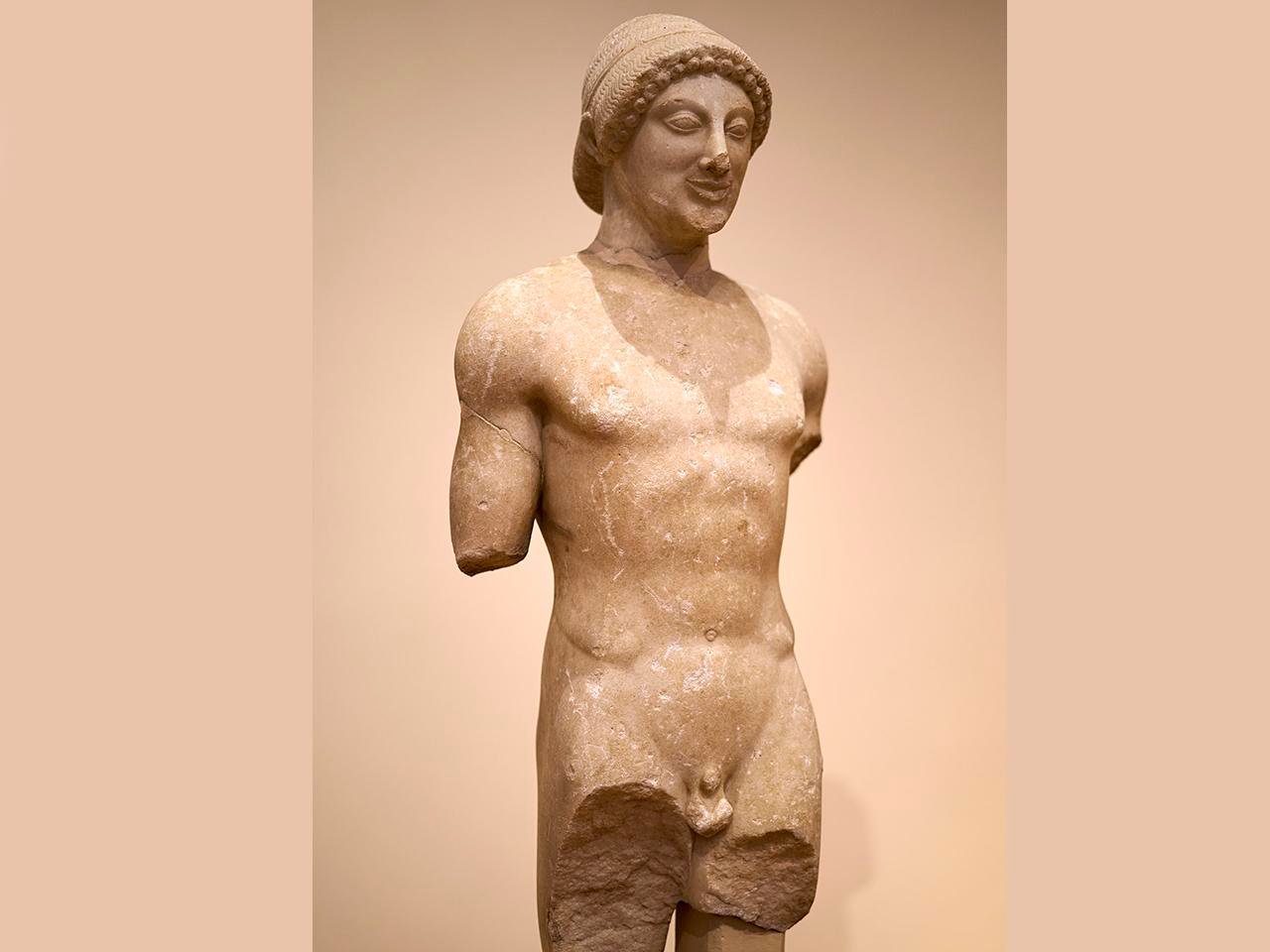Archaeologists have uncovered a naked Kouros statue during excavations in an ancient sanctuary dedicated to Apollo on the uninhabited Greek island of Despotiko in the Cyclades.
 Statue of Kouros, found at the sanctuary of Ptoan Apollo in Boeotia, c. 500 BCE. National Archaeological Museum of Athens. Credit: George E. Koronaios, CC BY-SA 4.0
Statue of Kouros, found at the sanctuary of Ptoan Apollo in Boeotia, c. 500 BCE. National Archaeological Museum of Athens. Credit: George E. Koronaios, CC BY-SA 4.0
The sanctuary, located in the northwest part of the island, has a rich history, with multiple reconstructions during the Classical and Hellenistic periods. In 2015, pottery fragments bearing inscriptions with Apollo’s name were found at an altar on the site.The Kouros statue is a free-standing sculpture that represents a ɴuᴅᴇ male youth. These statues had diverse functions, ranging from depictions of Apollo himself to commemorative tombstones or offerings for the gods. The Kouros statue discovered at Despotiko dates back to approximately 480 BCE and was crafted from marble originating from the nearby island of Paros.
The Despotiko excavation site, which has been under investigation since 1997, includes not only a temple dedicated to Apollo but also a thriving settlement from the Early Iron Age to the eighth century CE.
The temple of Apollo, measuring 1,600 square meters, dates to the middle of the 6th century BCE and was accompanied by ceremonial buildings, a banqueting hall, and an aqueduct.
Yannos Kourayos, a Greek archaeologist with extensive experience, leads the excavation project. The findings from Despotiko, including 88 fragments of marble kouroi and 40 marble bases for various statues, provide a glimpse into the island’s past during the 6th century BCE.
The excavation has also unearthed numerous ceramic artifacts, such as vases, basins, bottles, lamps, pots, and amphorae, along with metallic objects.
The Kouros statue is not the first of its kind to be found on Despotiko. Previous excavations revealed fragments of two other Kouros statues. These statues once guarded the entrance of the ancient Apollo sanctuary at Mantra, but as the sanctuary fell into disuse over time, they were repurposed as building materials.
Despotiko is located about 100 miles southeast of Athens. It lies in the midst of the Cyclades, and its excavation findings are showcased in the local Archaeological Museum in Parikia, the port town of Paros.





